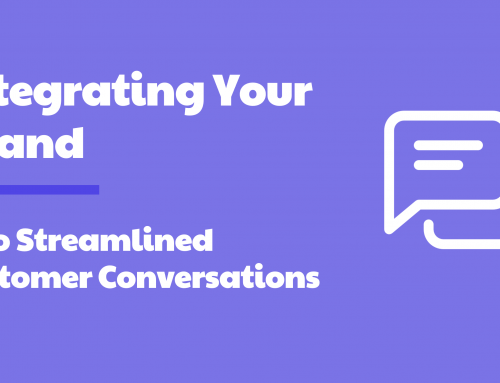How Conversational AI boosts Customer Experience
One of the key differentiators for building a successful business is Customer Experience (CX). Customer experience is the sum of all interactions that a customer has with a company or business. From the initial search for a new product or service, all the way to being a happy customer.
Each step in this journey is equally important where none of the steps should be overlooked. When optimizing the CX, it’s smart to break down the journey in smaller pieces. A common breakdown of the journey is as follows:
- Awareness: In this stage, a potential customer sees and ad of your product or service
- Consideration Here your brand is on the shortlist to buy a product or service
- Purchase: At this stage the product or service is bought and serviced
- Retention: Here the customer decides to buy again from a brand
- Advocacy: Finally, a happy customer can turn into a brand advocate, actively promoting a brand to others.
Managing and delivering an excellent experience in each step of the full customer experience can be costly and time consuming. But as mentioned earlier, it’s a key differentiator that can set a brand apart from its competitors. Great Customer Experience helps to gain new customers and retain existing ones.
Luckily there is something like Conversational AI and intelligent automation that can be used to boost the Customer Experience in a non-time consuming and cost effective manner.
Below we explain to you which parts of the Customer Experience journey can be significantly improved by using Conversational AI.
Improving The Speed And Quality Of Customer Service
One area that impacts Customer Experience is the speed at which questions and issues get resolved. Providing a disappointing customer service experience will lead to negative reviews on social media and other forums.
When talking about customer service, many businesses struggle with the speed of response that they are providing. Adding resources helps in the short-term, but is not a long-term and cost effective solution. Conversational AI can be used to automate part of the customer conversations taking place.It can be a good first-line support where human agents focus on more complex interactions with customers.
The technology behind Conversational AI has improved drastically over the years. It can resolve up to 60% of customer questions and it can do it instantly, all day and all night long.
Live Chat And Social Messaging In An Omnichannel Approach
Conversational AI is often used in live chat on a website. A chatbot is being deployed that provides first-line, 24/7 support. Human agents come into play when a customer request is more complex. The conversation is then being handed over from the chatbot to the human agent.
However, live chat is not the only channel customers want to communicate with brands. More and more interactions take place offsite on e.g. social platforms. These platforms provide new opportunities for brands on marketing, sales and customer service. We wrote a separate article about the rise of Social Commerce and how it impacts customer service).
Conversational AI can be deployed to social platforms. Many social platforms like Facebook, Twitter or Instagram provide Direct Messaging (DM) functionalities. Especially Millennials and Generation Z use these direct messaging functionalities often to communicate with brands.
There are several added benefits to social messaging. First of all, a conversation can be reopened any time. A conversation via Facebook Messaging is an ongoing conversation, whereas with live chat the conversation is closed when the live chat window is closed.
On ongoing conversation makes it easier for customers to reach out to a brand again. You simply search for the conversation and continue we’re you’ve left off. It’s like chatting with friends. This added benefit of social messaging is also applicable if the brand wants to reach out to a customer. For example to give an update on a product or service bought.
It can also be used for marketing and promotional purposes, but that does require a clear opt-in from the customer for this type of communication.
At Table Duck, we’ve created a live chat widget with social messaging handover. Basically it means that customers can shift their conversation to one of the preferred social media messaging channels. This is especially relevant when a conversation needs human agent interaction but the agent is not able to reply instantly. Remember, when a conversation is handed over to a social media messaging channel, the live chat window can be closed and the customer can continue doing other things while waiting for the human agent to reply.
Turning Website Visitors In Leads And Buying Customers
Conversational AI in live chat can be a lead generator for a brand. Smartly designed live chat widgets pro-actively welcome a website visitor, based on a set of triggers. These triggers can be behavioral based, for example a website visitor that visits your pricing page. A trigger can also be profile based, for example a returning, valuable customer.
With this technology, a brand is personalizing a website visit and turning visitors into leads and buying customers.
How To Start With Conversational AI In Customer Experience
When you start with implementing Conversational AI in your Customer Experience, the first step is to map out the full Customer Experience journey. Make sure you always have a feedback loop and read the comments that customers write. That should provide input for where to focus with the Customer Experience.
Start small with a pilot but do set clear objectives for that pilot. The Customer Conversation platform from Table Duck has a free 14-day trial to test and experience how Conversational AI boosts Customer Experience.

